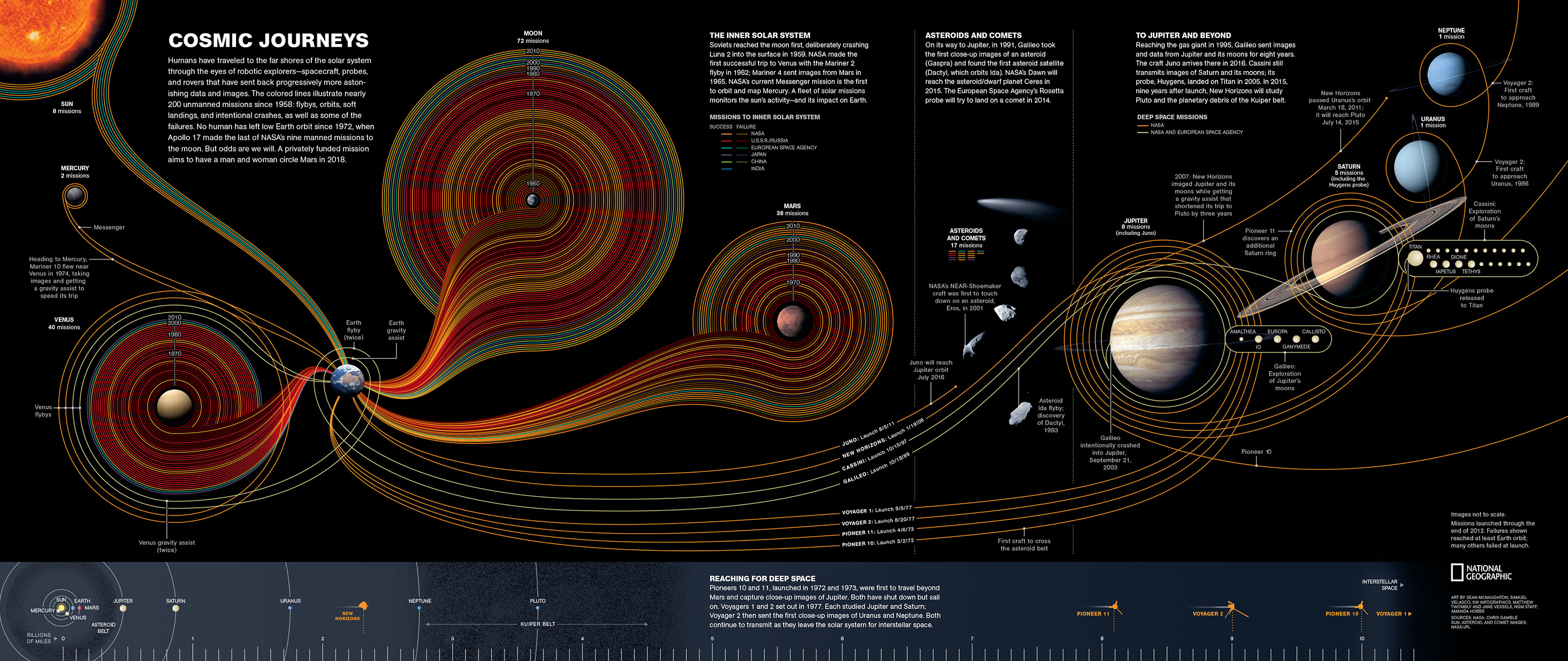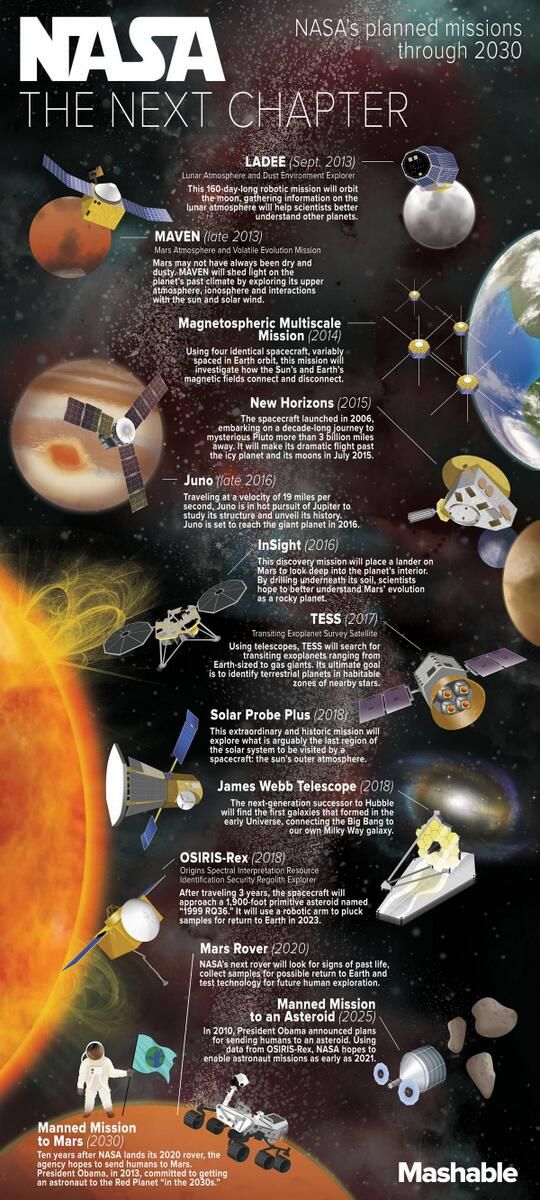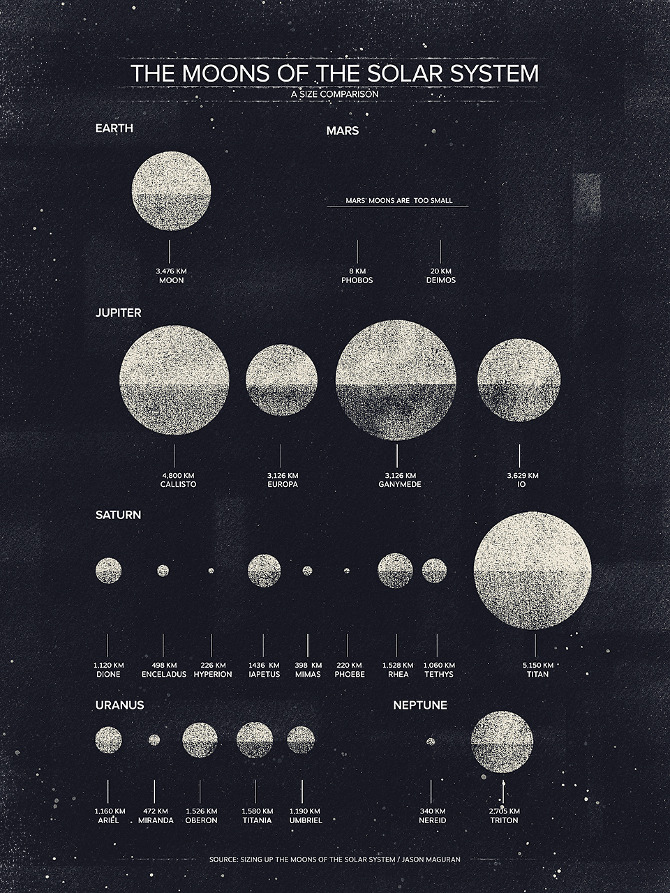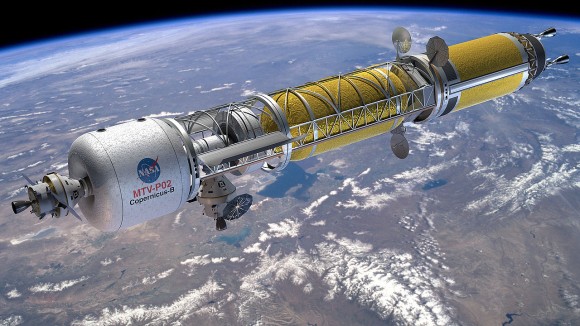


Updated! Zoomable Poster Now Shows Off 54 Years Of Space Exploration by Elizabeth Howell on May 20, 2014 Cosmic Journey by Sean McNaughton, Samuel Velasco,
5W Infographics, Matthew Twombly and Jane Vessels, NGM staff, Amanda Hobbs.
We humans are busy creatures when it comes to exploring the solar system.
This new graphic (which updates one from four years ago) showcases all the planets
we have visited in the past half-century. Both successful missions and failures are included
on this updated list, although sadly you wonít find much about the various visits to comets and asteroids.
Read more: http://www.universetoday.com/#ixzz32IE1mT5t





Artistís concept of a Bimodal Nuclear Thermal Rocket in Low Earth Orbit. Credit: NASA
In the past four decades, NASA and other space agencies from around the world have accomplished some amazing feats.
Together, they have sent manned missions to the Moon, explored Mars, mapped Venus and Mercury,
conducted surveys and captured breathtaking images of the Outer Solar System. However, looking ahead to the
next generation of exploration and the more-distant frontiers that remain to be explored,
it is clear that new ideas need to be put forward of how to quickly and efficiently reach those destinations.
Riding Light from Alphonse Swinehart on Vimeo.
In our terrestrial view of things, the speed of light seems incredibly fast.
But as soon as you view it against the vast distances of the universe, it's unfortunately very slow.
This animation illustrates, in realtime, the journey of a photon of light emitted from the surface of the
sun and traveling across a portion of the solar system, from a human perspective.